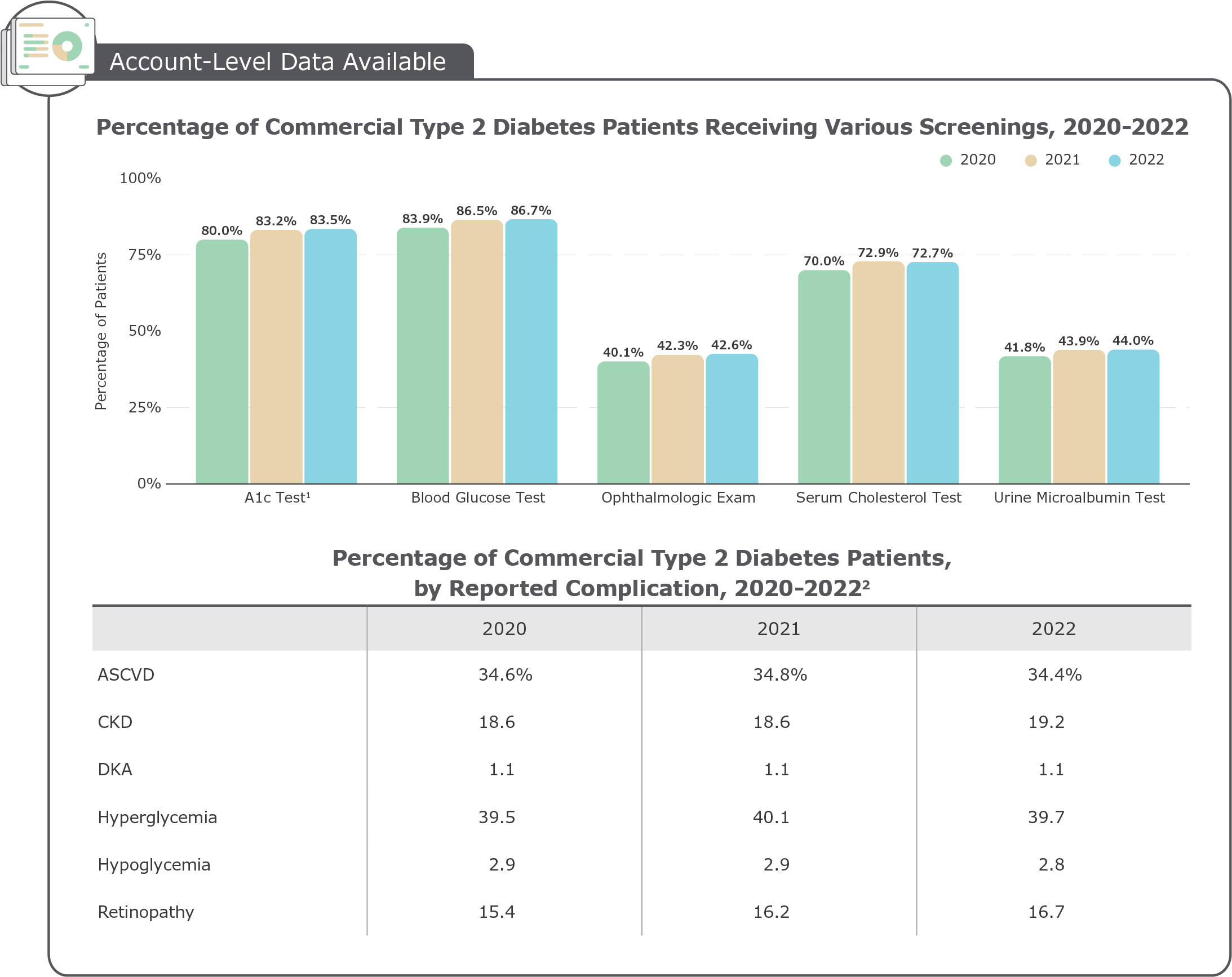Managed Care Digest Series® Spotlight
Screening Rates for Type 2 Diabetes Patients Continue to Recover in 2022
From 2021 to 2022, national screening rates
for commercial Type 2 diabetes patients rose
in four of five categories shown, following a
pandemic-induced dip in screening rates in 2020.
The share of commercial Type 2 diabetes
patients with select complications declined
across half of the categories profiled from 2021
to 2022—CKD, DKA, and retinopathy excepted.
Click here to read the 2023 Health Care Digest ™.

Data source: IQVIA © 2023
Key Takeaway
Despite the rising prevalence of diabetic retinopathy, screening rates among diabetes patients in
the U.S. remain less than optimal. Healthy People 2030 set a goal to increase the national diabetic
retinopathy screening rate to 67.7%, underscoring that social determinants of health such as
insurance status, race, and income level can impact a patient's ability to receive needed screenings.3
Read More Articles >>